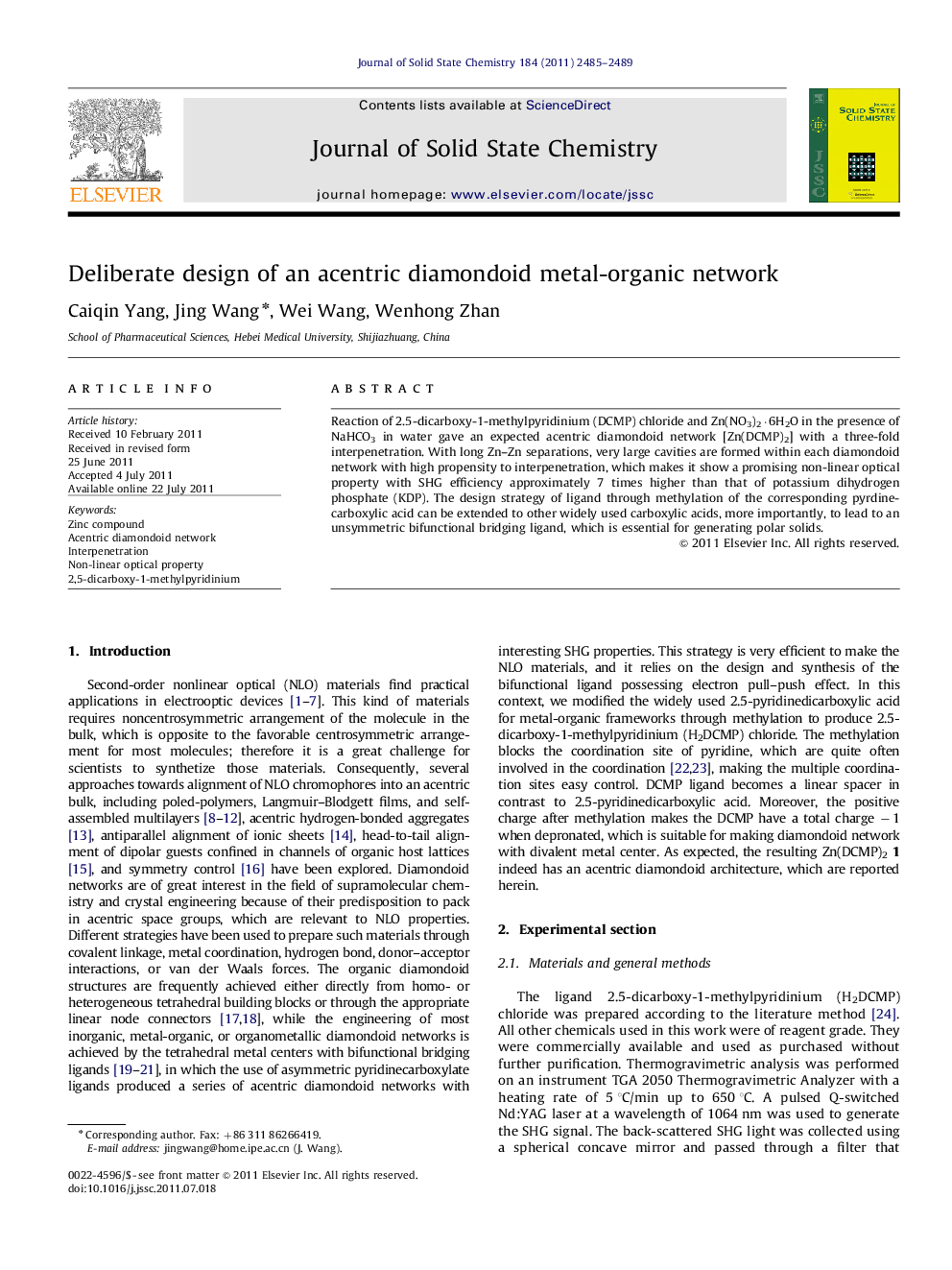| Article ID | Journal | Published Year | Pages | File Type |
|---|---|---|---|---|
| 1329084 | Journal of Solid State Chemistry | 2011 | 5 Pages |
Reaction of 2.5-dicarboxy-1-methylpyridinium (DCMP) chloride and Zn(NO3)2·6H2O in the presence of NaHCO3 in water gave an expected acentric diamondoid network [Zn(DCMP)2] with a three-fold interpenetration. With long Zn–Zn separations, very large cavities are formed within each diamondoid network with high propensity to interpenetration, which makes it show a promising non-linear optical property with SHG efficiency approximately 7 times higher than that of potassium dihydrogen phosphate (KDP). The design strategy of ligand through methylation of the corresponding pyrdinecarboxylic acid can be extended to other widely used carboxylic acids, more importantly, to lead to an unsymmetric bifunctional bridging ligand, which is essential for generating polar solids.
Graphical AbstractReaction of Zn(NO3)2·6H2O with a deliberately designed unsymmetrical ligand 2.5-dicarboxy-1-methylpyridinium (DCMP) chloride and in the presence of NaHCO3 gave an expected noncentric diamondoid network [Zn(DCMP)2], which has its SHG response approximately 7 times higher than that of potassium dihydrogen phosphate (KDP).Figure optionsDownload full-size imageDownload as PowerPoint slideHighlights► DCMP as an unsymmetrical organic ligand to design metal organic framework. ► Long Zn–Zn separations and very large cavities formed. ► Diamondoid network with high propensity to interpenetration formed. ► Bifunctional bridging ligand was used to generate polar solids with large SHG response.
